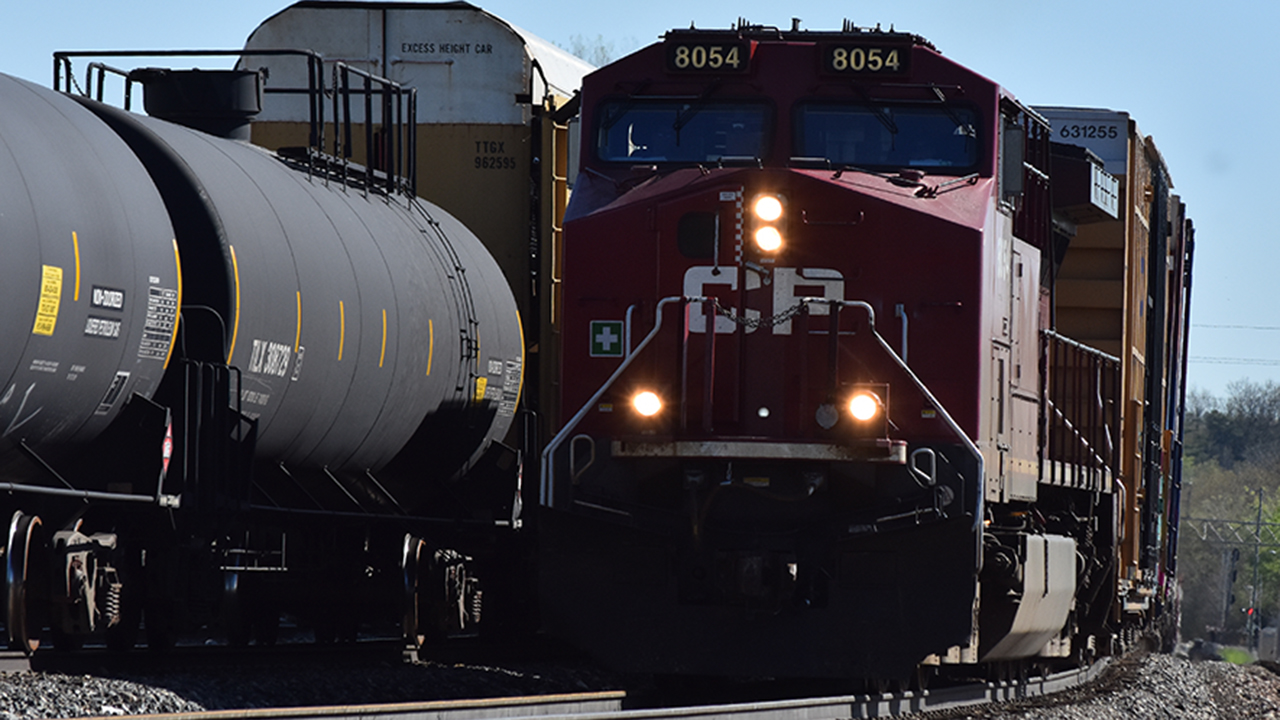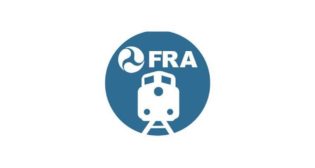
Illuminating Safety: Essential Qualities for Selecting Locomotive Lighting
Written by John Fogel
A Westbound CPKC manifest freight meets an eastbound on the Galt Subdivision at Guelph Junction, May 2024. William C. Vantuono photo.
Rail continues to be a popular mode of travel and for good reason. Rail travel is convenient, fast, efficient for the movement of goods and offers a carbon footprint that has a positive impact on the environment. These and more make rail travel an essential part of transportation networks. Because its smooth operation is important to so many, ensuring safety and continuous functioning is crucial. One critical area is locomotive lighting. Whether it’s illuminating platforms, tracks or maintenance areas, ensuring you select and install the right exterior and interior lighting for a locomotive is vital.
Choosing Exterior Lighting
According to a 2003 Federal Railroad Administration (FRA) rule, the specs to follow when choosing exterior lighting state that when illuminated, the headlight on a locomotive needs to produce a peak intensity of at least 200,000 candela, at least 3,000 candela at an angle of 7.5 degrees and at least 400 candela at an angle of 20 degrees from the centerline of the locomotive when the light is aimed parallel to the tracks. Each headlight needs to allow the person in the cab of the locomotive to see a person standing at least 800 feet ahead and in front of the headlight.
To follow the FRA specs, one of the first decisions to make when sourcing lamps is the type to use. This typically comes down to a choice between incandescent, LED or halogen. In addition to factors like the cost of individual lamps and the frequency of maintenance required, it’s important to consider how the lamps you select will help you advance toward your longer-term lighting goals. For example, if the objective is to transition entirely away from incandescent lighting, switching to halogen can be an efficient upgrade that’s affordable enough to implement all at once. If your ultimate objective is to transition more gradually to LEDs, using a combination of halogen and LED can help save you time and money while you upgrade to LED lighting throughout the fleet.
Halogen lamps, used as train headlights and in other exterior locations, are designed to withstand environmental elements and to maintain the mandatory 200,000 candela output required by the FRA Transport/ Canada. These lamps are critical for lighting the view of the tracks in front of the train for engineers, as well as illuminating the back. A locomotive typically uses four 75-volt halogen lamps on the front of every locomotive and two on the back.
Choosing Interior Lighting
In selecting an interior lighting solution for locomotives, it is important to evaluate a variety of options based on several criteria, including cost, durability, longevity and ease of use. LED lamps are designed to illuminate locomotive interiors that require bright lighting, including walkways, stairways, engine rooms and electrical cabinets. LED lamps take less energy—some about six to seven times less than a regular incandescent for the same amount of illumination. They are also less prone to breakage, so they are safer in that sense. Additionally, the longer life span LEDs offer reduces maintenance cost.
LED lamps offer lightweight construction to withstand high vibration. The lamp operates in a wide range of temperatures, from -40°C to 70°C, to provide the flexibility to deploy locomotives anywhere in the U.S. or Canada. LED lighting is especially beneficial when used in the engine room compartment of the locomotive. Additional benefits include increased uptime, reduced maintenance costs and PVC/acrylic construction that equates to longer bulb life.
Choosing the Source
As with anything in which you are investing time and money, research your options, which is particularly important when safety is involved. The first quality you want to look for in a manufacturer is if they keep pace with industry standards, which indicates the company’s commitment to quality and safety. While cost efficiency is always a consideration, quality and reliability are just as important. Look for a manufacturer equipped to perform rigorous quality assurance tests, ideally in their own facility.
While FRA testing focuses exclusively on the center beam and beam angle, manufacturers can test for various other important features, such as a lamp’s durability and lifespan, its functionality in extreme temperatures and its ability to withstand high vibration on the track. A certificate of conformance ensures your lamps meet all requirements and that you can keep your trains operating wherever they go.
Selecting the right interior and exterior lighting for a locomotive requires careful consideration of several essential qualities. By prioritizing durability, adaptability, visibility and energy efficiency, purchasers and engineers can enhance safety, uptime and sustainability within the critical transportation hubs. Investing in quality lighting solutions not only ensures a well-lit and secure environment, but also contributes to the overall efficiency and resilience of rail operations, which benefits passengers, personnel and the environment alike.
John Fogel, Product Manager at Amglo, has worked with the company for more than 15 years in product development. He can be contacted at [email protected]. For more information, visit www.amglo.com



